In a previous paper1 were presented briefly some basic particle models resulted from a cold genesis theory of matter and fields2–5 of the author, (CGT), regarding the cold forming process of cosmic elementary particles, formed–according to the theory, as collapsed cold clusters of gammons–considered as pairs:
of axially coupled electrons with opposed charges, which gives a preonic, quasi–crystalline internal structure of cold formed quarks with hexagonal symmetry,5 based on
preon–experimentally evidenced in Krasznahorkay et al.,6 but considered as X–boson of a fifth force, of leptons–to quark binding, and on two cold formed bosonic ‘zerons’ :
; and
, formed as clusters of degenerate electrons with degenerate mass and magnetic moment and with degenerate charge
, (characteristic to the up–quark–in the quantum mechanics).
According to this theory,2–5 based on the Galilean relativity, the magnetic field is generated by an etherono–quantonic vortex
of s–etherons (sinergons–with mass
) giving the magnetic potential A by an impulse density:
and of quantons (h–quanta, with mass:
, formed as compact cluster of sinergons) giving the magnetic moment and the magnetic induction B by an impulse density:
, the nuclear field resulting from the attraction of the quantum impenetrable volume ui of a nucleon in the total field generated according to fields superposition principle, by the Nsup>n
superposed vortices
of component degenerate electrons of another nucleon, having an exponential variation of quanta impulse density, the nuclear potential resulting in the form:
(1)
By an electron model with radius: a = 1.41fm and with exponential variation of the quantum volume density and of the magnetic field quanta:
;
;
.
In the base of some neo–classic (pre–quantum) relations of the electric and magnetic fields:2–5
(2)
In two relative recent papers,7,8 were brought arguments for two possible mechanism of cold particles forming as collapsed Bose–Einstein condensate (BEC) without destruction:
a) by clusterizing and cold collapsing without destruction, from a gammonic quasi–crystallin pre–cluster Nz,7 or
b) by pearlitizing, by the fragmenting of a bigger BEC.8 The particles cold forming by clusterizing may results–according to CGT, in a “step–by–step” process,7 supposing:
a1)
pre–cluster/cluster forming, with the aid of magnetic confinement, with a metastable equilibrium interdistance between gammons with antiparallel magnetic moments:
(Figure 1);
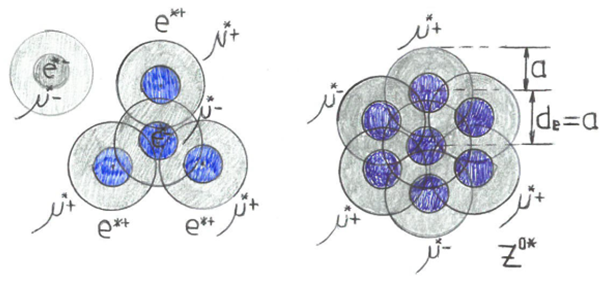
Figure 1 The z0*–pre–cluster forming.
a2)
and
are pre–cluster/cluster forming;
a3)
–quark or neutral pseudo–quark pre–cluster/cluster forming;
a4) pre–cluster of quarks or pseudo–quarks forming;
a5) elementary particle/dark boson forming, or directly:
a1’) quark pre–cluster forming (Figure 2) (Figure 3)®collapsed quark cluster forming;
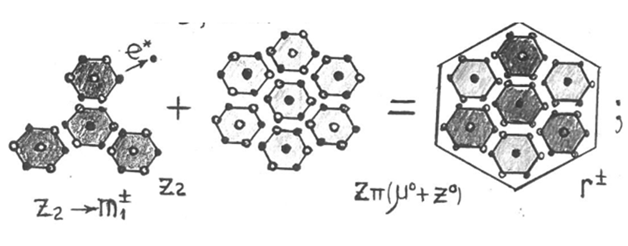
Figure 2 The m1–and r*–quark pre–cluster forming.
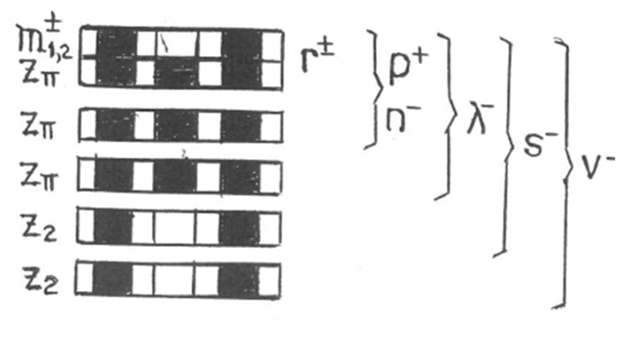
Figure 3 The cold forming of baryonic quarks.
a2’) elementary particle/dark boson forming (cluster of quarks with the current mass in the same baryonic impenetrable quantum volume, uI–Table 1).
Basic quarks: m1 = (z2– me*) = 135.2 me, |
|
Derived quarks: p+(n–) = m1(m2) + 2zp |
|
Mesons: (q–
) |
Baryons: (q–q–q) |
|
|
|
|
|
|
|
|
|
|
|
|
|
|
Table 1 Elementary particles: (theoretic mass) / (experimentally determined mass)
The particles cold forming by pearlitizing supposes:
b1) the forming of a bigger BEC of gammons, with the concentration of particles:
, (a=1.41 fm), in a strong gravitational or magnetic field:
, at temperatures
, i.e.–Much lower than the transition temperature
–corresponding to a very low (neglijible) fraction N0/N; (N(
)–the initial concentration of particles, (for example, for
, TBE(B=0)=1464K), the length along the
–field, of a gammonic BEC with the concentration N0 formed at T=Tp resulting of value:
;8
b2) The pearlitizing of the resulted BEC by large temperature oscillation around the transition value
. The necessity of temperature oscillation around the transition value
for the BEC’s pearlitization results as consequence of the residual (reciprocal) magnetic interactions between gammons, which gives a superficial tension
.
For example, considering a radius rp of meta–stable equilibrium of a drop of BEC formed by the BEC’s pearlitization and maintained by the equilibrium between the force generated by the internal vibration (thermal) energy
and the force generated by the surface tension
:
(3)
Because
, (the force rectangular on unit length), for:
, (a=1.41fm–the metastable equilibrium inter–distance between gammons),8 the equilibrium radius is:
(4)
In which de is the inter–distance between adjacent gammons and
is the length of a gammon. It is necessary in consequence–for estimate the value rp, to estimate the value of gammon’s length and magnetic moment
.
It was argued in CGT,7 that is not logical to consider at an inter–distance
, a value of the electron’s magnetic moment radius:
, higher than the inter–distance
, resulting a value:
for
with
, by the use of equation (2) and with
.8
If we use the expression (2) of the B–field, because the magnetic moment radius
, represents in the etheronic, quantum–vortexial model of magnetic moment, the radius until which the B–field quanta have the light speed c, and because–for
, for
interaction is maintained the relation:B = E/c, we may re–write this relation in the form:
(5)
Resulting in consequence, the expression of the electron’s magnetic moment at inter–distances
. The reciprocal equilibrium position of gammonic electrons, in the particular case of a semi–hard gamma quantum considered–in CGT, as gammonic pair:
, may be estimated by equation (5), imposing a correspondence with the conclusion of quantum mechanics regarding the (
) pair production, which indicates as minimal energy value of an external electric or magnetic field which may convert the gamma quantum into stable electrons, the value:
. In CGT, based on the classical mechanics and relativity, this value
has the sense of the energy necessary to ‘split’ the gamma quantum into the component electrons with opposed charges:
(6)
In which we considered a possible degenerate charge,
. This interpretation is logical by the fact that the nuclear E–field may split the
–quantum only if it can act over internal e(e*)–charges of opposed sign.
Between e and (2/3)e, considering an electric permittivity
, we have the next significant possibilities:
-
;
-
;
-
.
Because for a photon–like gammon its length must exceed its diameter proportional with the speed,9 it results that the case a) corresponds to a relativist gammon (
), which–in CGT, may have simultaneously rest mass and the c–speed, and the case c) correspond to a linked gammon, which is confined inside a bigger elementary particle (mesonic or baryonic), the degenerate charge
being specific to the up–quark , (p–quark–in CGT).2–5 So the case b) corresponds to a gammonic pre–cluster, in accordance also with the quantum mechanics.
The degenerate charge’s radius:
for
, results from (6), according to a CGT’s relation:
(7)
but in the hypothesis:
. However, the so–called “stopped light experiment”10,11 showed that a Bose–Einstein condensate determine a high slowing of the light passed through it, at a value
, so for
, by the known relation:
it results that we may consider the approximation:
only in the case:de=1.5a, corresponding to a relativist gammon, for the case b) and c) resulting that
, so–the charge degeneration may be less accentuate,
, because the decreasing of the Ve–potential with
. By the proportionality between n,
and the quanta density, deduced in CGT: n,
,9 because the proportionality:
for r > a, it results that:
(8)
As consequence, the relation (6) must be re–written in the approximate form:
(9)
with
, resulting that:
. This result explains also the possibility of particles forming by clusterizing, by the conclusion that–in a section plane of a preonic
–pre–cluster formed with hexagonal symmetry, the inter–distance of metastable equilibrium di =a results by the equality
for the interaction with the central electron, either by electrostatic attraction and magnetic repelling or by magnetic attraction and electrostatic repelling (Figure 1) (Figure 4), the gammonic pre–cluster’s collapsing resulting by the attraction between adjacent circularly disposed gammonic electrons, the central chain of axially coupled gammons giving the z0–preon magnetic moment, which explains similarly the cold confining of a pre–cluster of z0–preons, and so on (Figure 5).
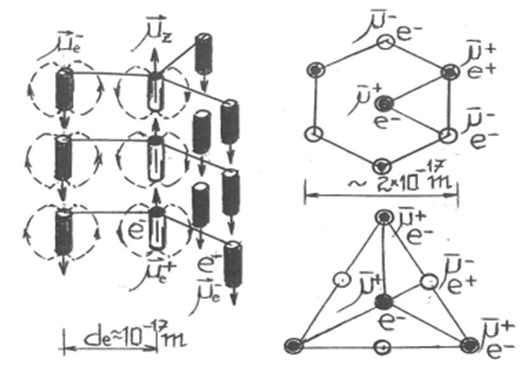
Figure 4 The forming of the z0–cluster’s kernel.
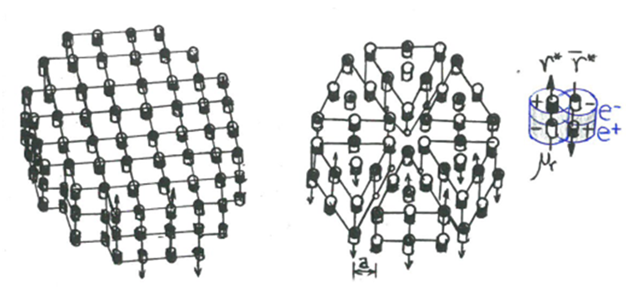
Figure 5 Parts of crystallized gammonic pre–cluster which may result by a BEC’s pearlitizing.8
The total collapse of the gammon is impeded–according to CGT, by a repulsive field and force with exponential variation, generated by the ‘zeroth’ vibrations of the electron’s kernel (centroid) and acting over a quantum volume of the electron: ue(re » d) with a force:
, (which explains also the non–annihilation between e–and e+ at low energies), deduced considering a quasi–elastic interaction of field quanta with the interaction surface
of the repelled electron.
We may consider–in consequence, that the gammonic electrons have a remnant vibration of spin and of translation between the interdistances: de=1.5a and di’=(2/3)a , as consequence of the self–resonance induced by the repulsive potential Vr(d), the value de=a being a mean value, the equilibration between the attraction force Fa(d), of magnetic and electric type, and the repulsive force
, being realized at d £ di’ = (2/3)a, the action of magnetic potential
being diminished by Vr with a factor fd £1.
For the approximation of the superficial tension
, according to the previous considerations, we may approximate that–at the gammonic pre–cluster’s surface with a mean interdistance de=a between adjacent gammons, the binding force
is given by the magnetic interaction between gammons, the electric interaction force between gammons (of inter–dipoles type) being considered compensated by the repulsive force Fr (d), in a simplified model.
At increased temperatures
, the linking (magnetic) energy resulted from equation (9):
, is diminished by the vibration energy according to a relation of the total binding energy of the form:
, (
–diminishing factor), the binding force being in this case:
(10)
In consequence, we may approximate the expression of the superficial tension
as being given by the magnetic interaction force between two adjacent gammonic electrons, according to the approximation relation:
(11)
with
. The equilibrium radius rp of the pearlitic gammonic pre–cluster results in this case according to the approximate relation:
(12)
For
and
, it results:
. When
, the (metastable) equilibrium radius results smaller, according to (12), (rp’< rp), but because the equilibrium inter–distance cannot decrease when the internal energy kBTi increases, according to equation (4), it results that the equilibrium radius of the BEC may be re–obtained at the specific decreased value only by the decreasing of the particles number of the BEC, so the pearlitization with the forming of quasi–cylindrical pre–clusters of baryonic neutral particles corresponding to a radius:
may be formed by large oscillations of the internal temperature Ti–given by the boson’s vibrations, around the value
.
On the radial direction, for a pre–cluster with the radius rc< rp , the electric interaction between gammons having the electron’s charge in surface, may be neglected for di< a and we may consider that the magnetic potential
between gammons is partially equilibrated by the vibration energy kBTi and by the repulsive potential Vr(d) acting over a quantum volume of the electron:
.7
For conformity with the general electrogravitic form of CGT,2–4 we will take for the repulsive force Fr(d), the form correspondent with equation (2):
(13)
i.e.–considering an exponential variation of the quanta density and a quasi–elastic interaction of Vr–field quanta (approximated with small radius–in report with the radius rc of the static qs–charge) with the interaction surface:
(14)
Considering the effective action of the Vr–field quanta over the qs–pseudo–charge in a quasi–constant solid angle Αs,rc may be approximated as given by the result of equations (6)+(7):
, which may be used also for approximate the value of the reciprocal magnetic moment :
.
Because the magnetic force results from the gradient of quanta density
which gives by equation (2), the magnetic induction B(d), we must deduce the magnetic force considering that the magnetic moment
of the attracted electron is quasi–constant to a short derivation interval
, retrieving the expression of the magnetic force between two degenerate electrons in the form:7
(15)
which results from the exponential variation of the B–field quanta density inside the electron’s quantum volume,
being a diminishing factor resulted by the periodically partial destroying of the internal etherono–quantonic vortex
of the magnetic moment by the vibration energy:
. By (15) the equality:
, for
, gives:
(16)
with
1 and with:
1 resulting that:
.
At low temperatures, because the magnetic moment results–according to CGT–by the energy of etherono–quantonic winds of the quantum vacuum, we may take
. For the kernel of a formed particle, because the superdense centroids of quasi–electrons are contained (quasi)integrally inside its impenetrable quantum volume ui , we may approximate that–for a protonic m–quark with
quasi–electrons with the centroids included in the quark’s impenetrable quantum volume of radius
, we have
at
.
Considering that at
, (for example–at
), the pre–cluster’s collapse is stopped at
, with
it results that
. Because
, it results that the cluster cannot be equilibrated at an inter–distance
,2–4 (<
being close to but higher than
–corresponding to c)–case), so the conclusion that the mean inter–distance di=a between the electrons of the gammonic pre–cluster is one of un–stable equilibrium, is justified.
It results that–at temperatures
, the resulted pearlitic pre–clusters with radius
may collapse because the residual (reciprocal) magnetic moments of the gammons and because the decreasing of the internal energy:
more than the superficial energy:
, from equation (3) resulting that:
. Because the electron is a very stable particle, its negentropy being maintained by the energy of the etherono–quantonic winds according to CGT and in concordance with the particle’s “hidden thermodynamics”,12 it results a slow variation of
with the internal temperature Ti , of the fraction
, but with the consequence of inflation generating or of collapsing of the gammonic pre–cluster, at high variation.
The repulsive force increasing with the temperature Ti may be approximated by a relation specific to metals. Considering that the value
is attained at a temperature close to those of quarks deconfining:
, it results an approximation relation of
–density variation with the temperature:
(17)
with
resulting:
. So, we may approximate that
. At very low temperatures Ti the repulsive force Fr is maintained–according to equations (7), (13) & (17), because the maintaining of the ‘zeroth’ vibrations of the electronic superdense kernels (centroids) which creates the disturbance which generates the scalar density part:
, according to CGT. This phenomenon explains the fact that the quasi–crystallin cluster of electronic centroids of the particle’s kernel not collapses neither at very low temperatures, explaining the particle’s lifetime increasing with the temperature’s decreasing.2–5
If the internal pre–cluster’s temperature Ti is maintained close to the metastable equilibrium value
, the pre–cluster’s collapsing may still occur in a strong magnetic field, by the aid of the magneto–gravitic potential
, according to CGT.8
This conclusion may be argued by the hypothesis of the magnetic fluxon
, considering that the
–vortex–tubes of the B–field are fluxon
with a section radius
, with a linear decreasing of the impulse density:
, for
, (which is specific to vortex–tubes) and with the mean density:
approximate equal with those resulted from the local Bl–field value given by equation (2).
Assuming–by CGT,2–4 that the vortex–tubes
of the magnetic B–field are formed around vectorial photons (vectons) of 2.7K microwave radiation of the quantum vacuum–identified in CGT as electric field quanta having a gauge radius:
4 and that the electron has a small impenetrable quantum volume:
,5 from CGT8 it results that:
(18)
with (
–the fluxon’s mass on unit lengt). For
, we have:
–a neglijible value comparative to:
, but which can initiates the clusterizing process of a preonic
–pre–cluster forming or of an photon or of an electron forming–around a superdense kernel (half of an electronic neutrino–in the electron’s case, according to CGT),1–3 but at high values of the B–field or of magnetic field–like etherono–quantonic vortexes formed in the quantum vacuum as chiral fluctuations.
The necessity of a high value of the B–field–like chiral fluctuations intensity in the process of particles cold forming directly from the primordial “dark energy”, results in accordance with a particle–like sub–solitons forming condition13 which specifies that the energy
of the mass–generating chiral soliton field, (given–in this case by a sinergono–quantonic vortex
), should be double, at least, comparing to the mass energy:
of the generated sub–solitons; (
).
The generalization to the scale of an atomic nucleus permits to consider an atomic nucleus as a (non–collapsed) fermionic condensate with quasi–crystallin arrangement of nucleons, which may explain the nucleonic “magic” numbers of maximal stability,2–4 the nuclear fission reactions–well described by the droplet nuclear model, being explained by a nuclear local phase transformation at the internal temperature increasing–determined by the nucleons’ vibrations.
Mathematically this phenomenon may be equated by equation (11), by modifying the volume term:
and the surface term
from the Bethe–Weizsäcker semi–empiric formula of the nuclear binding energy, based on the liquid drop model proposed by George Gamow, in which A is the atomic number and
–the volume and the surface term coefficiens, given as difference between the binding energy of the nucleons to their neighbours:
and
–the kinetic energy per nucleon, depending on its Fermi energy.
A generalized form of the binding energy formula for a gammonic BEC, may be obtained writing the kinetic term Ek in the form: kBTv, which gives:
(19)
with TC=Eb/kB and Ev=kBTv–the mean vibration energy of the particles and Eb–the binding energy per particle. The vibrations induced by interaction particles such as a neutron which can split an uranium nucleus, may explain by equation (19), the fact that the nuclear fission is explained by the “drop” nuclear model, even if the nuclear properties and even the nuclear “magic” numbers of nucleons which gives the maximal nuclear stability: 2, 8, 20, 28, (40), 50, 82, 126, may be explained also by a solid rotator type of nuclear model , particularly–of quasi–crystallin type, as those deduced in CGT2–4 which explains the “magic” nuclear numbers as resulting from quasi–crystalline forms of alpha particles, with
.
In CGT, this phenomenon is equated by multiplying the binding energy between two nucleons with a term depending on the vibration “liberty” (amplitude) of the nucleon, in the form:
, with
.
For a gammonic BEC, the number A of degenerate electrons results in the form:
the equations (12) & (19) , for a metastable gammonic BEC, giving the binding energy in the form:
(20)
with
, the relation (20) showing that the increasing of the BEC’s temperature determines transition to a liquid/like phase and thereafter–pearlitization, as consequence of the internal temperature increasing over the equilibrium value.



